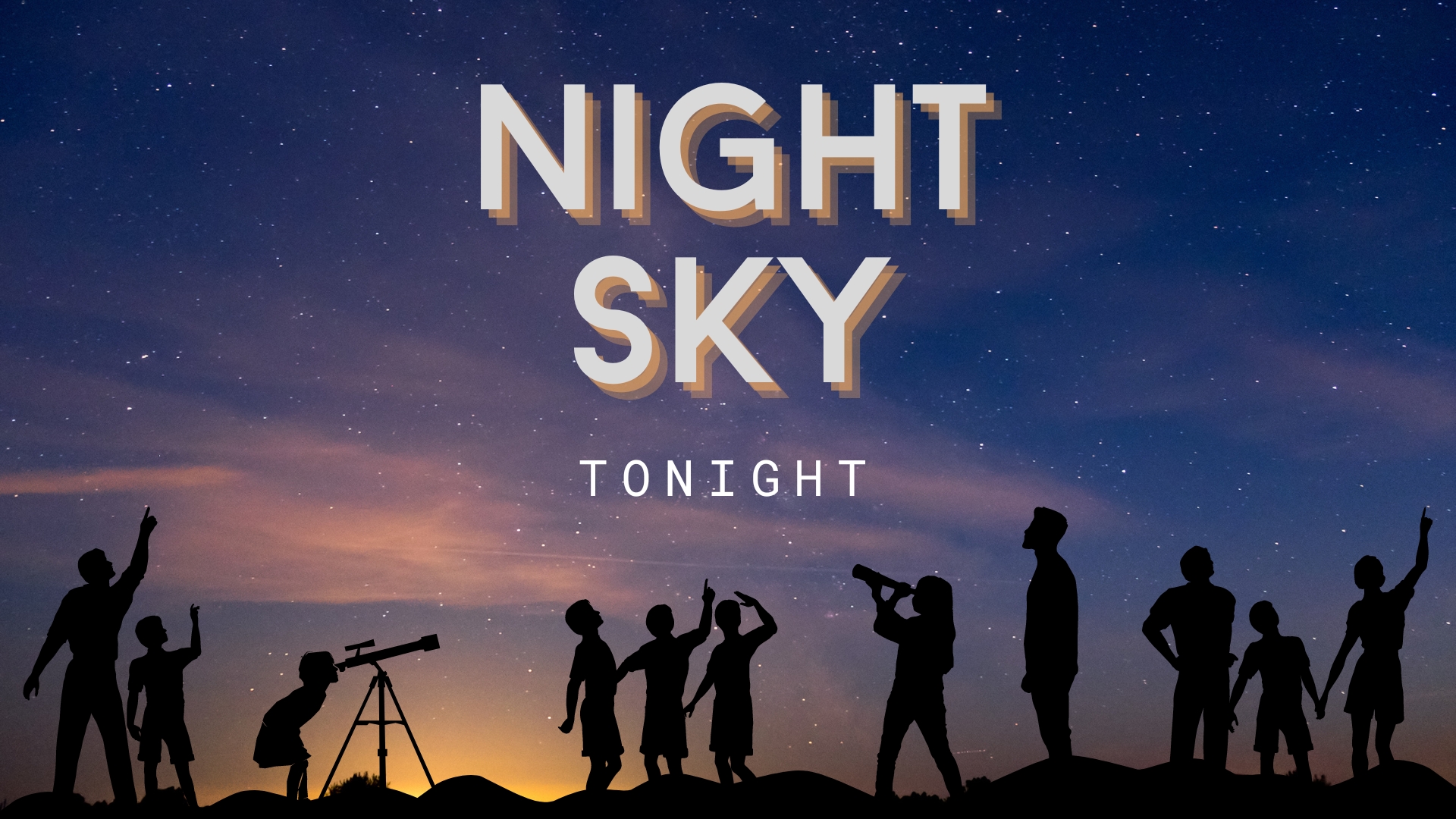NASA's Artemis 2 moon rocket gets 2nd stage even as Trump tries to scrap Space Launch System (photos)
Only a few pieces left before SLS is fully assembled.
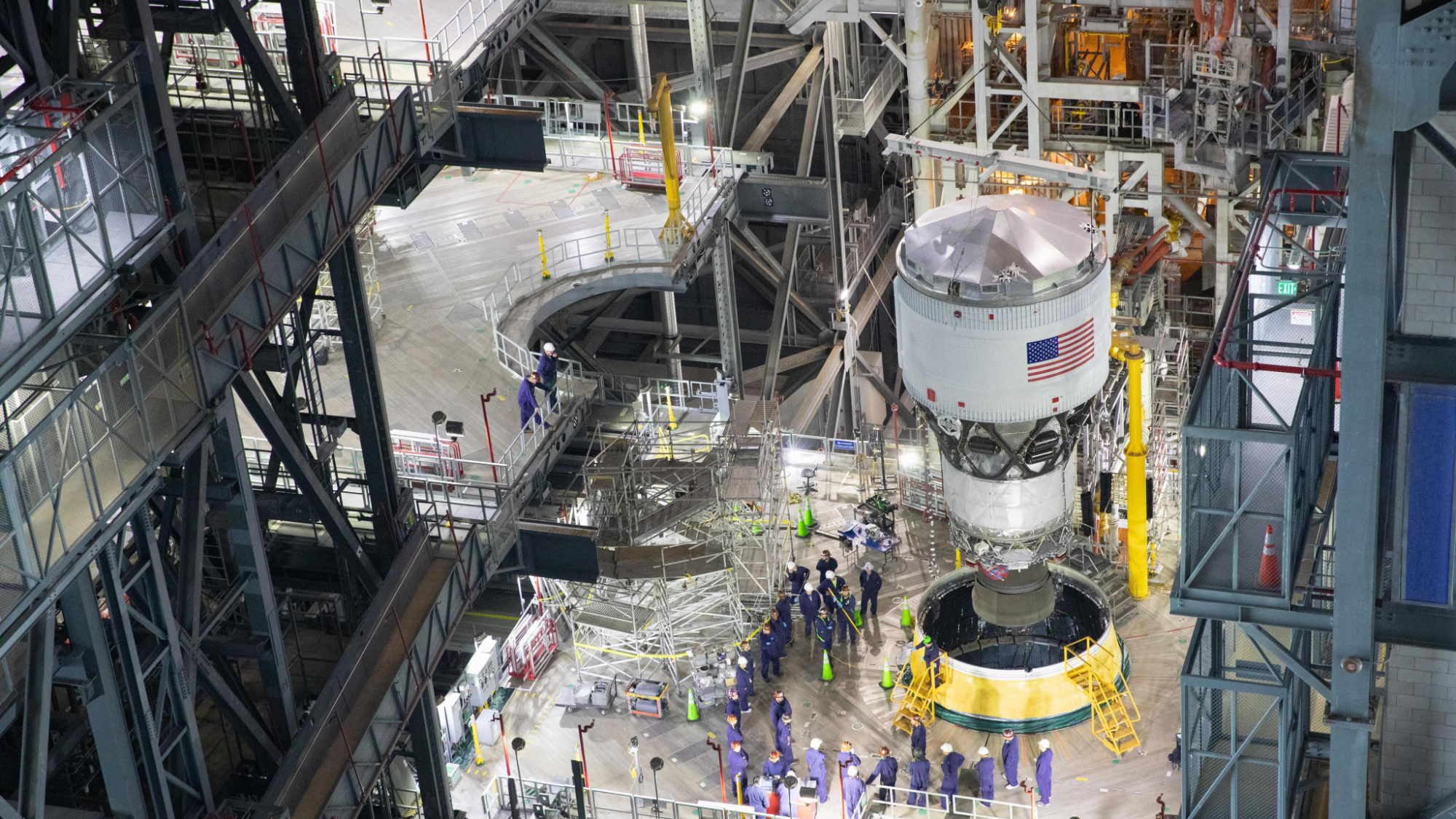
The Artemis 2 megarocket set to launch NASA's next astronauts to the moon in 2026 is almost completely assembled.
The giant Space Launch System (SLS) rocket continues to grow inside the NASA's Vehicle Assembly Building (VAB). Technicians at the Kennedy Space Center (KSC), in Florida, stacked the rocket's second stage onto the launch vehicle Thursday (May 1). The Interim Cryogenic Propulsion Stage (ICPS) is responsible for carrying the Orion spacecraft and crew the rest of the way into orbit around the Earth, and then sending them on their way to the moon.
This SLS rocket will launch the Artemis 2 mission, with NASA astronauts Reid Wiseman, Victor Glover and Christina Koch as well as Canadian Space Agency astronaut Jeremy Hansen. The quartet are flying the second installment of NASA's Artemis program, which aims to establish a permanent presence on the moon as a technology springboard to one day send humans to Mars.
The next mission, Artemis 3, would then deliver astronauts to the moon with the help of a Starship lander in 2027. That could be the last SLS rocket to fly, though. The Trump administration proposed canceling the SLS and Orion program after Artemis 3 in its 2026 budget proposal on Friday (May 2).
Artemis 2 is scheduled to launch sometime in early 2026 — more than three years after the launch of Artemis 1, in November 2022. Artemis 1 sent an uncrewed Orion spacecraft into lunar orbit on a mission that lasted about 25 days. Orion and crew won't enter lunar orbit for Artemis 2, but they will fly around the moon.
Rather than enter orbit, the ICPS will steer Orion and the Artemis 2 crew out of Earth orbit into a free-return trajectory around the moon. This slingshots the spacecraft around the lunar far-side on a course directly back to Earth.
Unexpected damage to Orion's heat shield caused by atmospheric reentry during Artemis 1 is to blame for the long wait time between Artemis 1 and Artemis 2. That damage delayed Artemis 2 and Artemis 3 by more than a year each. Artemis 3 is currently targeted for 2027, and will carry the first astronauts to land on the moon since the Apollo missions.
Breaking space news, the latest updates on rocket launches, skywatching events and more!
Yesterday morning, teams completed stacking the interim cryogenic propulsion stage (ICPS) atop @NASA_SLS for the @NASAArtemis II mission. The ICPS is an in-space rocket stage that provides propulsion to @NASAOrion during the first three Artemis missions. Read more about the… pic.twitter.com/2qbVCZ6HwkMay 2, 2025
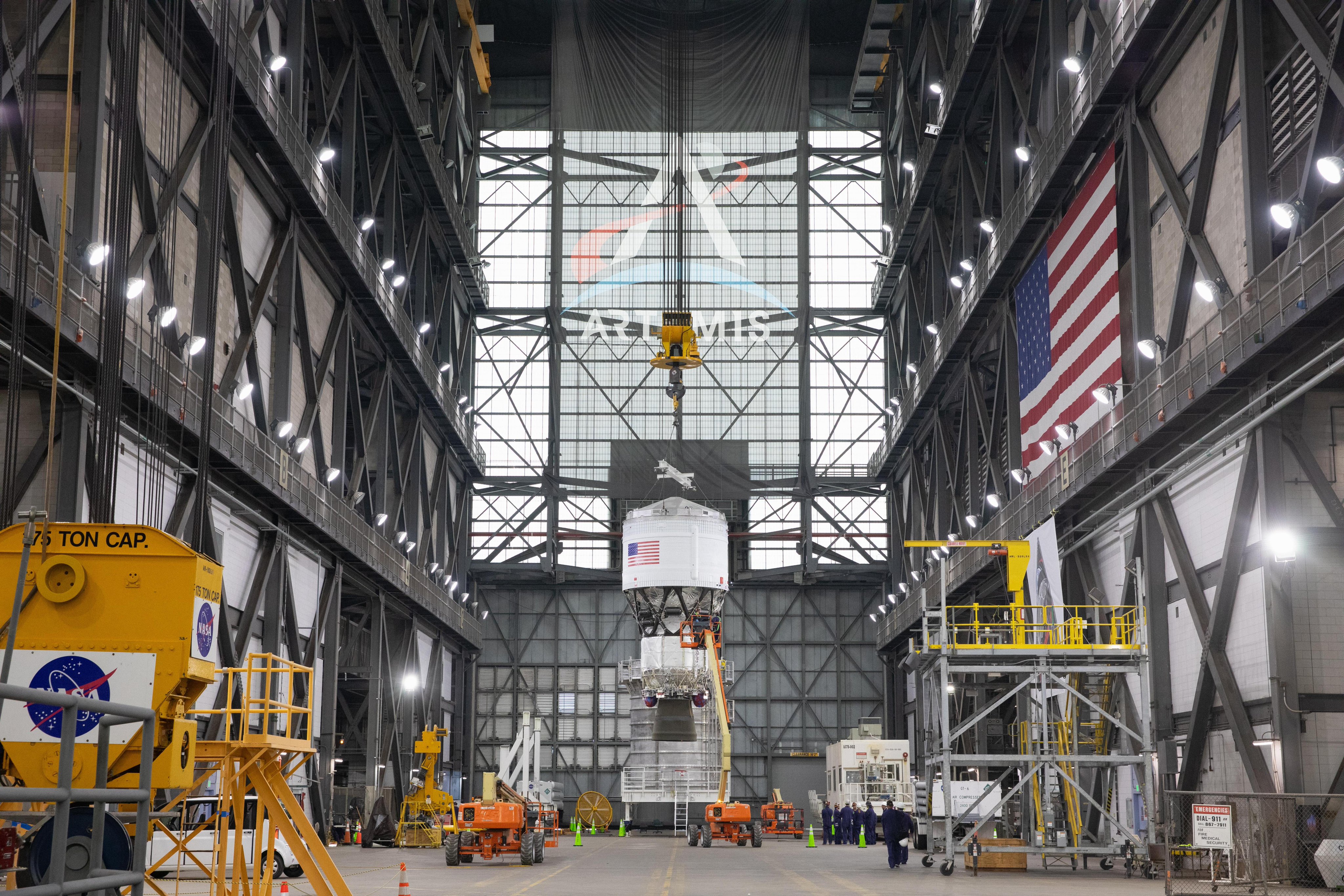
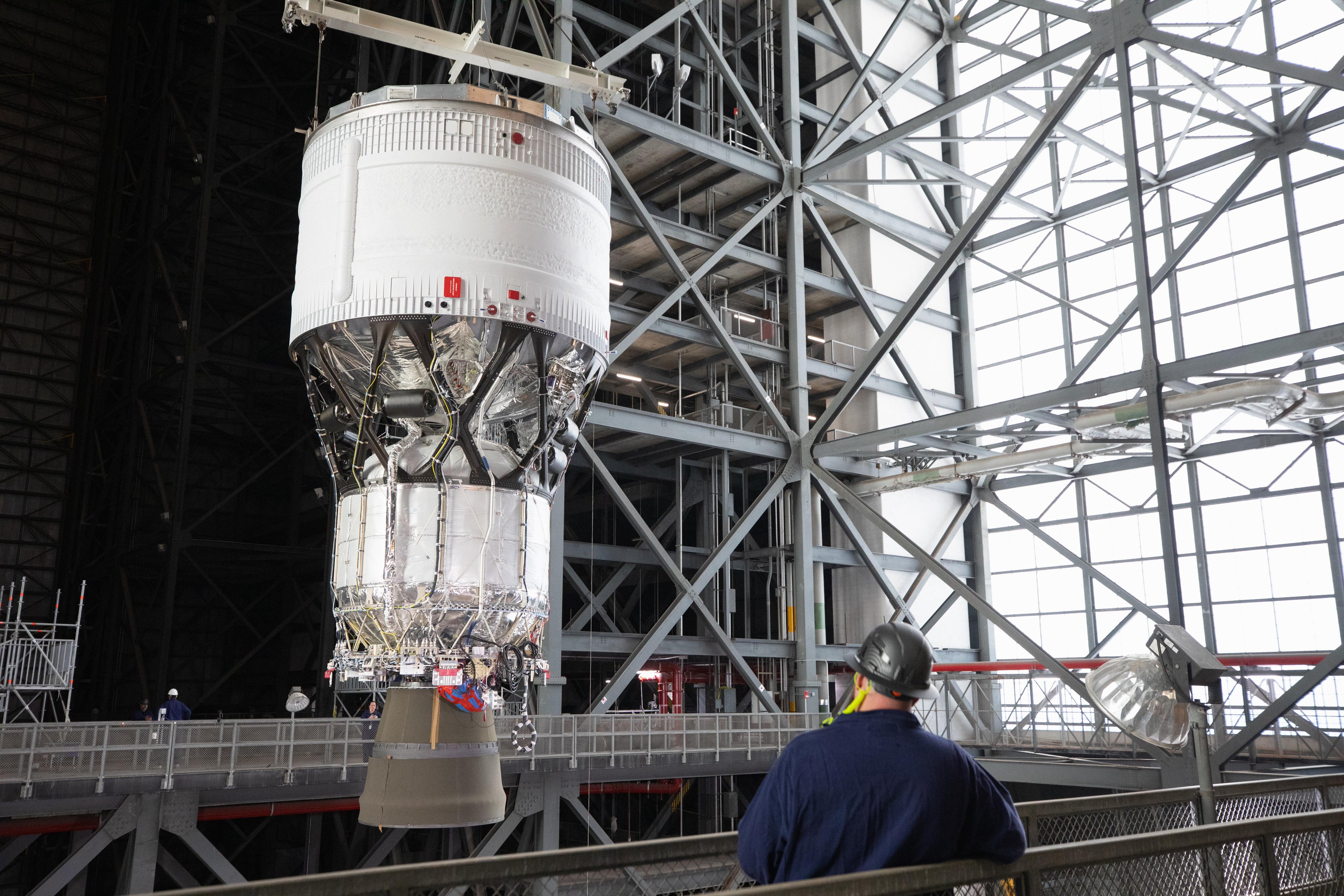
Handing over the keys to Orion!Lockheed Martin completed assembly of the Artemis II Orion spacecraft and handed the vehicle over to NASA Orion, which in turn transferred it to @NASAGroundSys for processing. Next, Orion will roll via transporter to @NASAKennedy's MPPF for… pic.twitter.com/uanCjEShHOMay 1, 2025
The ICPS arrived at the VAB last month. Now, NASA has shared photos of the ICPS being stacked inside the VAB on X, showcasing the stage as it was hoisted from the warehouse floor and lowered into the SLS stage adapter.
NASA also took deliver of Orion and its service module this week from the spacecraft's main contractor Lockheed Martin. Before it heads to the VAB for incorporation with SLS, Orion will be transferred KSC's Exploration Ground Systems for processing.
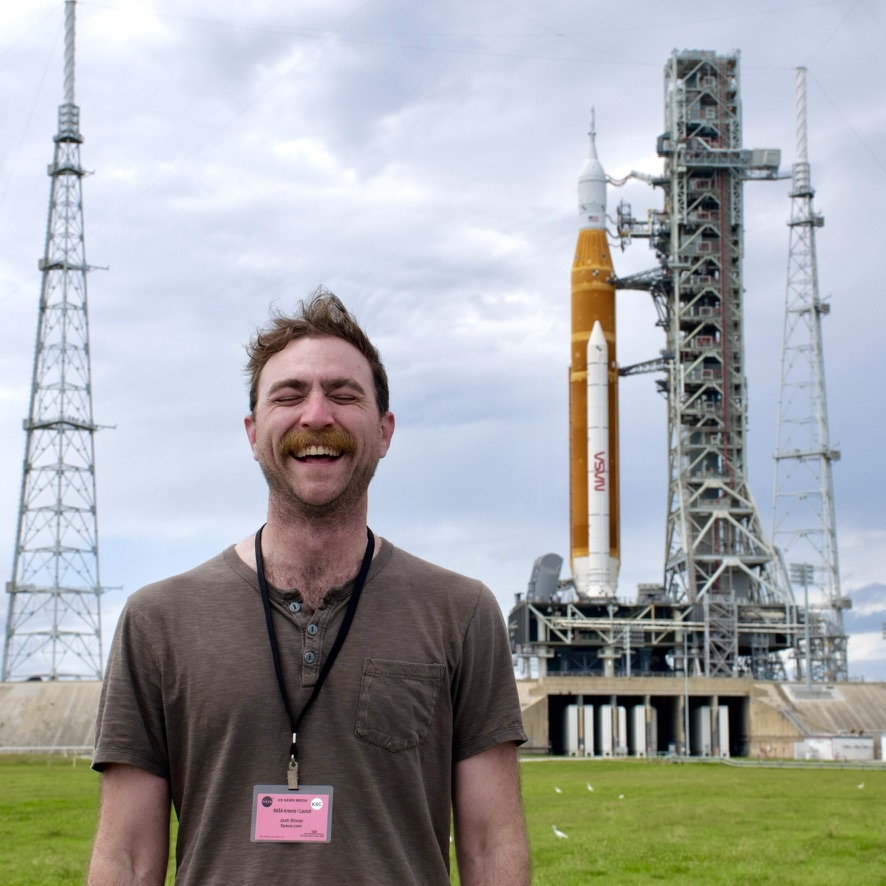
Josh Dinner is the Staff Writer for Spaceflight at Space.com. He is a writer and photographer with a passion for science and space exploration, and has been working the space beat since 2016. Josh has covered the evolution of NASA's commercial spaceflight partnerships and crewed missions from the Space Coast, as well as NASA science missions and more. He also enjoys building 1:144-scale model rockets and human-flown spacecraft. Find some of Josh's launch photography on Instagram and his website, and follow him on X, where he mostly posts in haiku.
You must confirm your public display name before commenting
Please logout and then login again, you will then be prompted to enter your display name.
